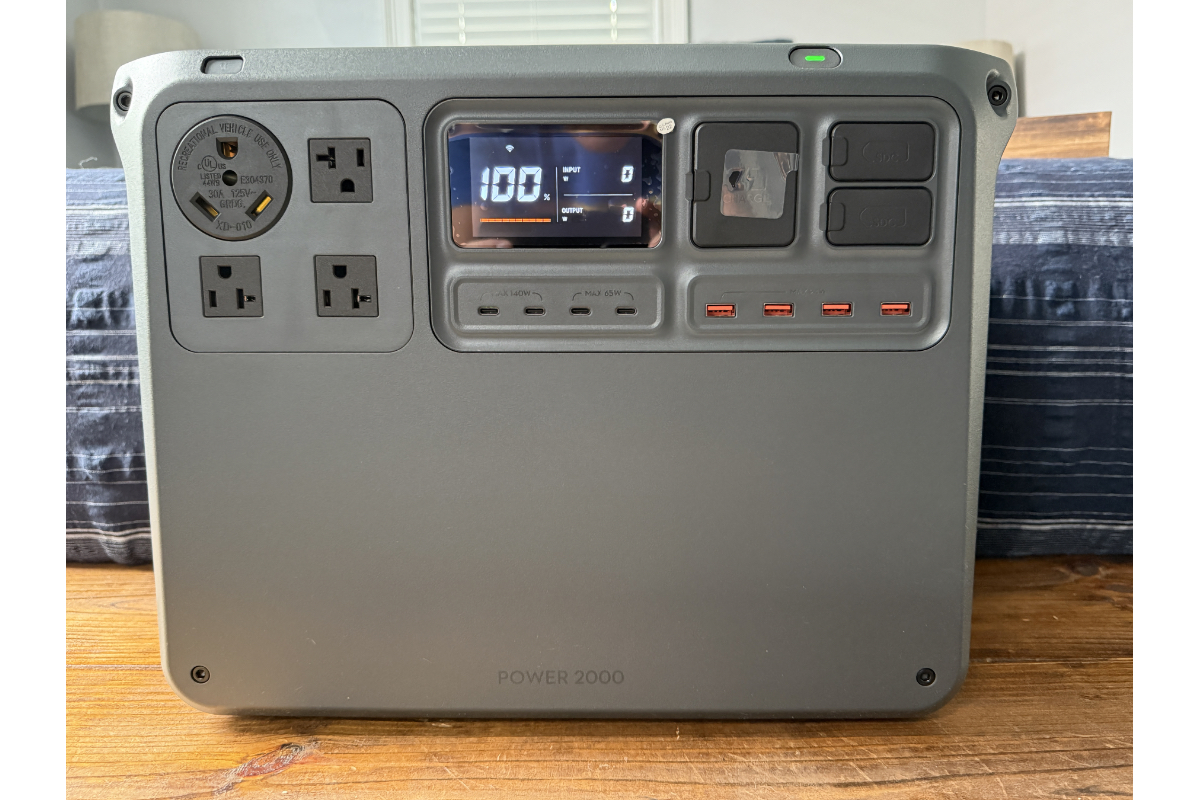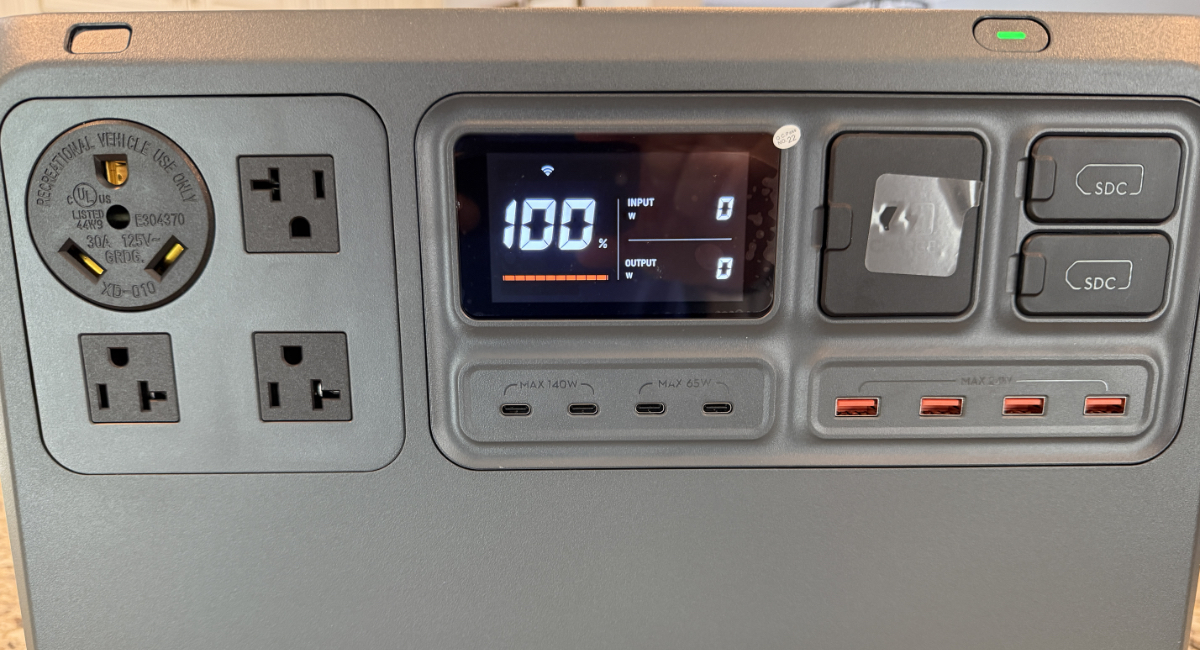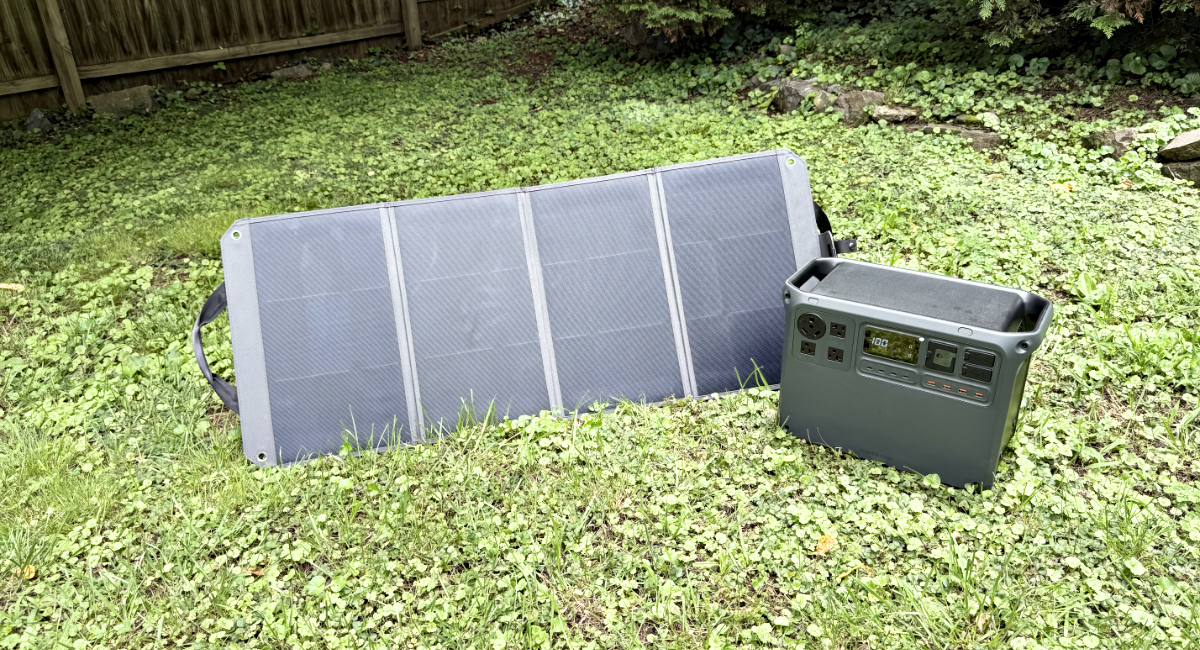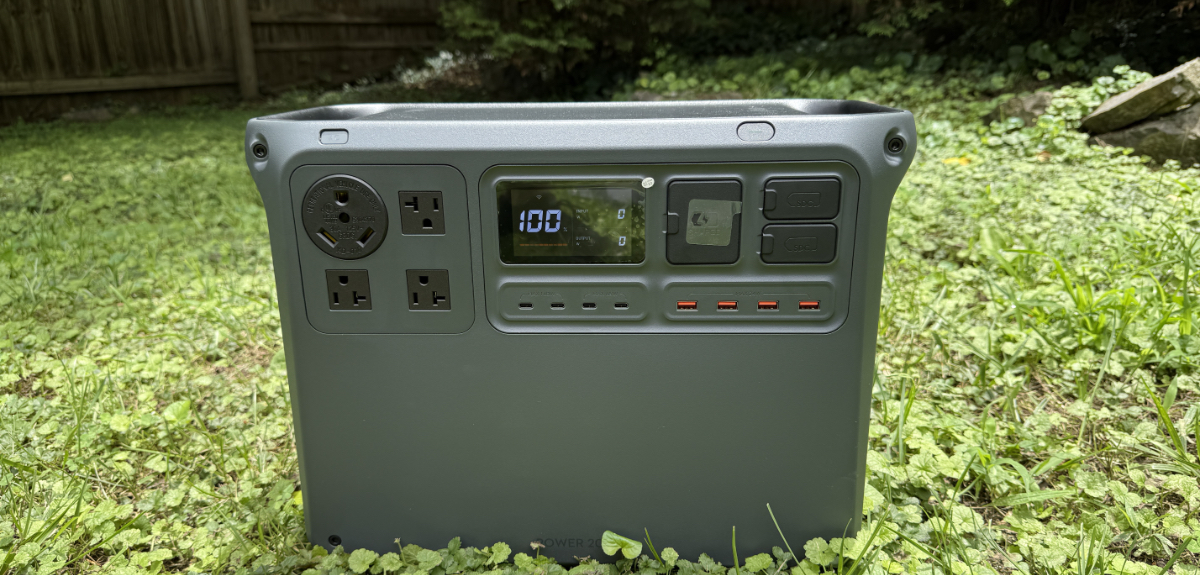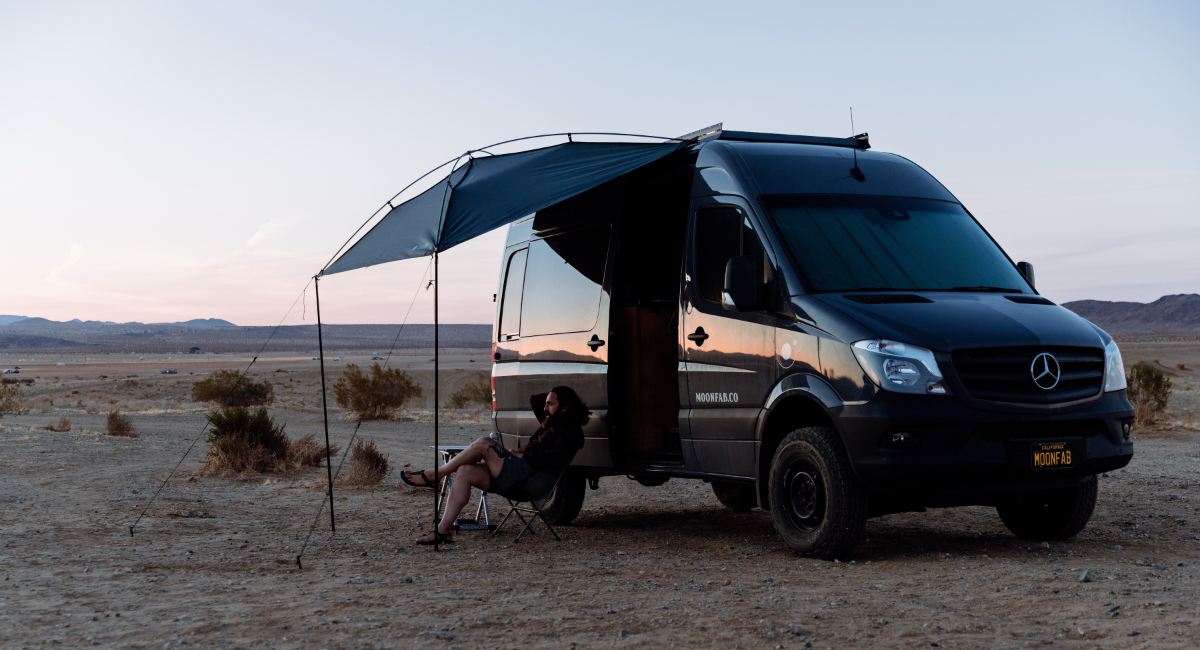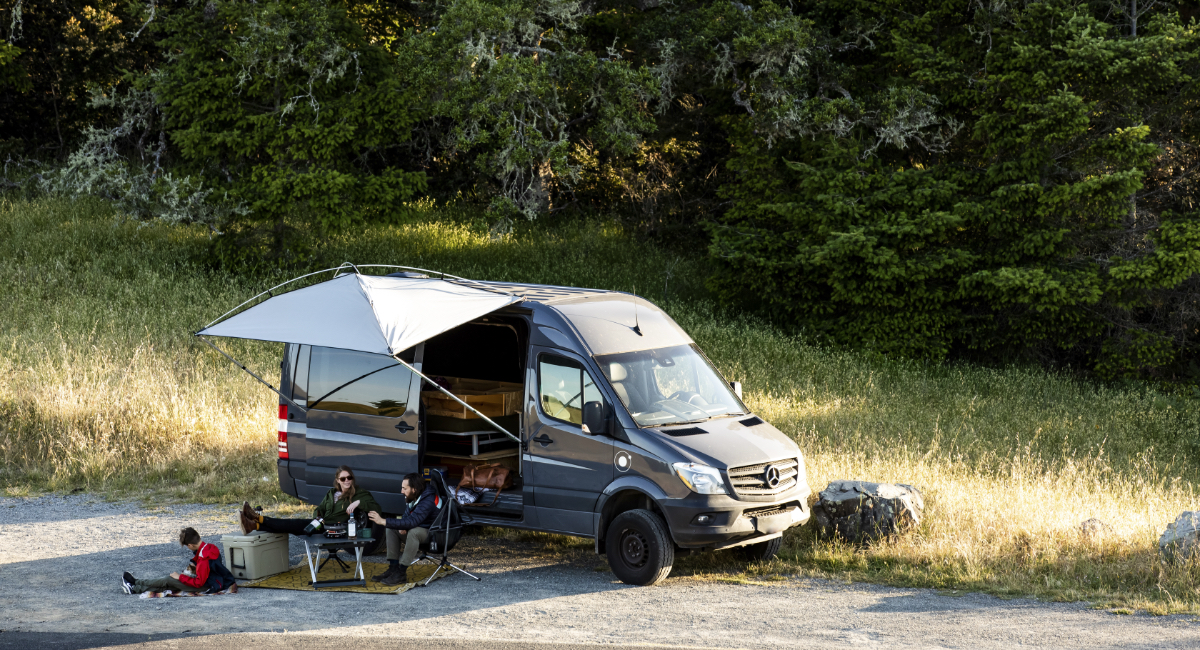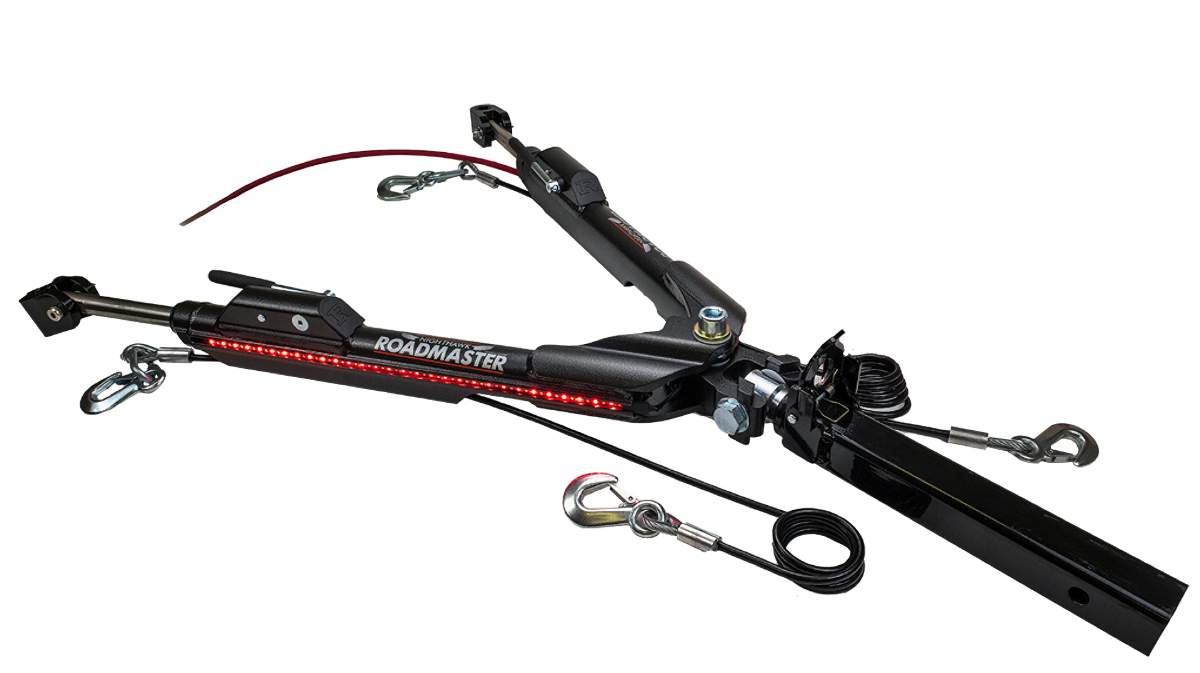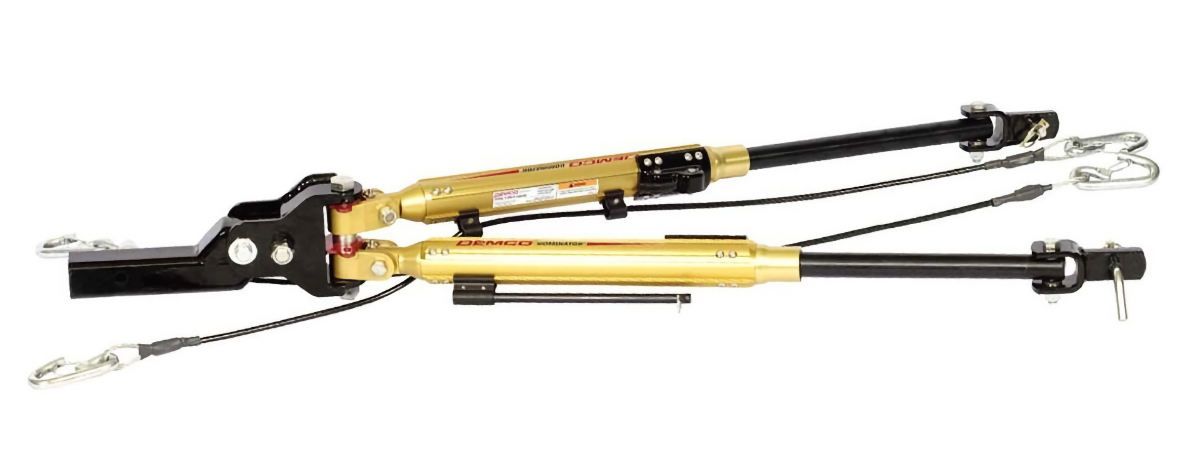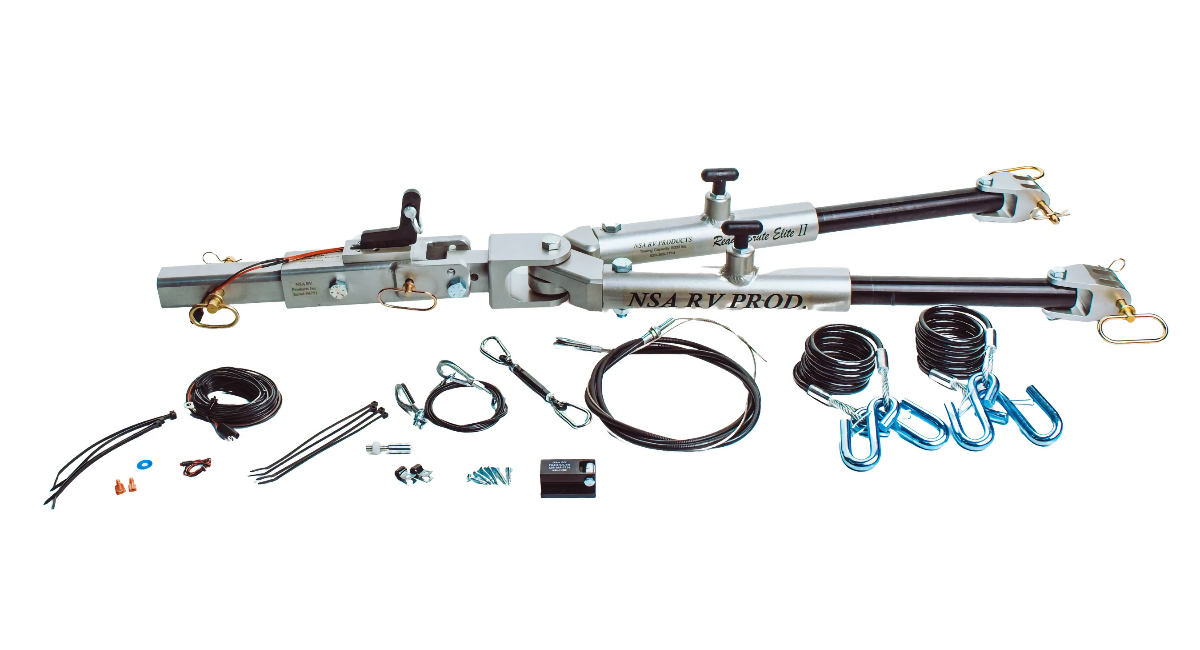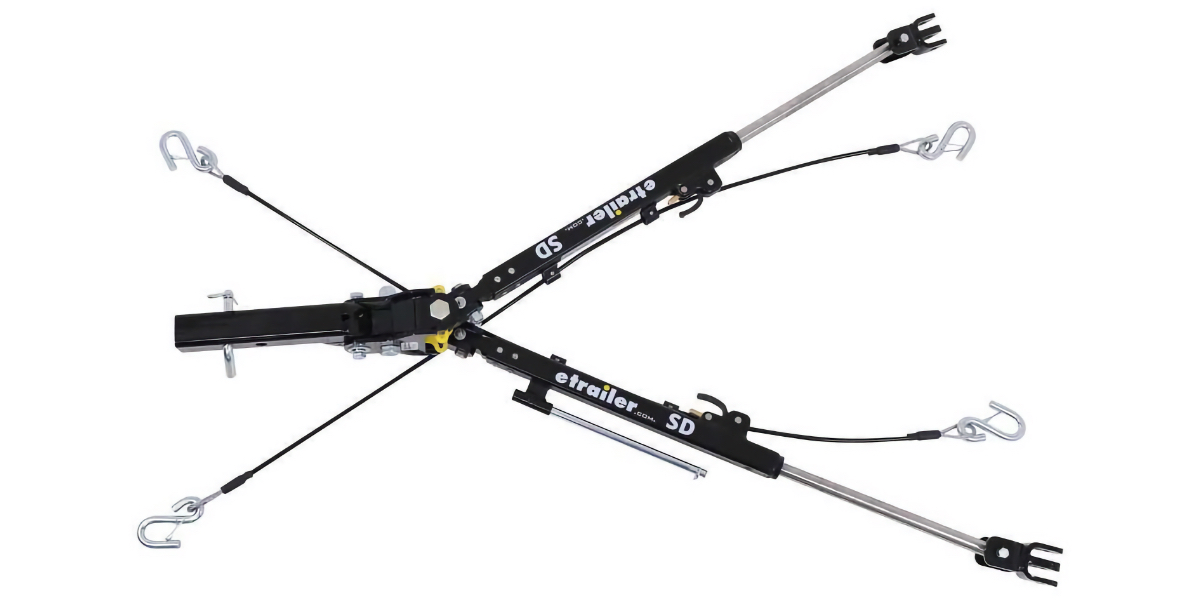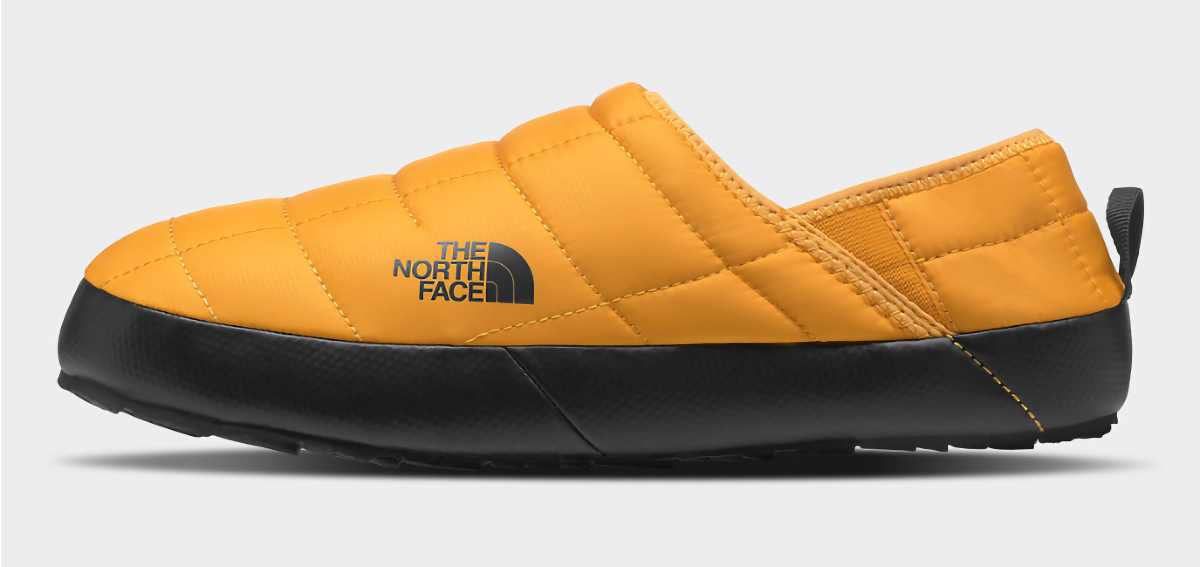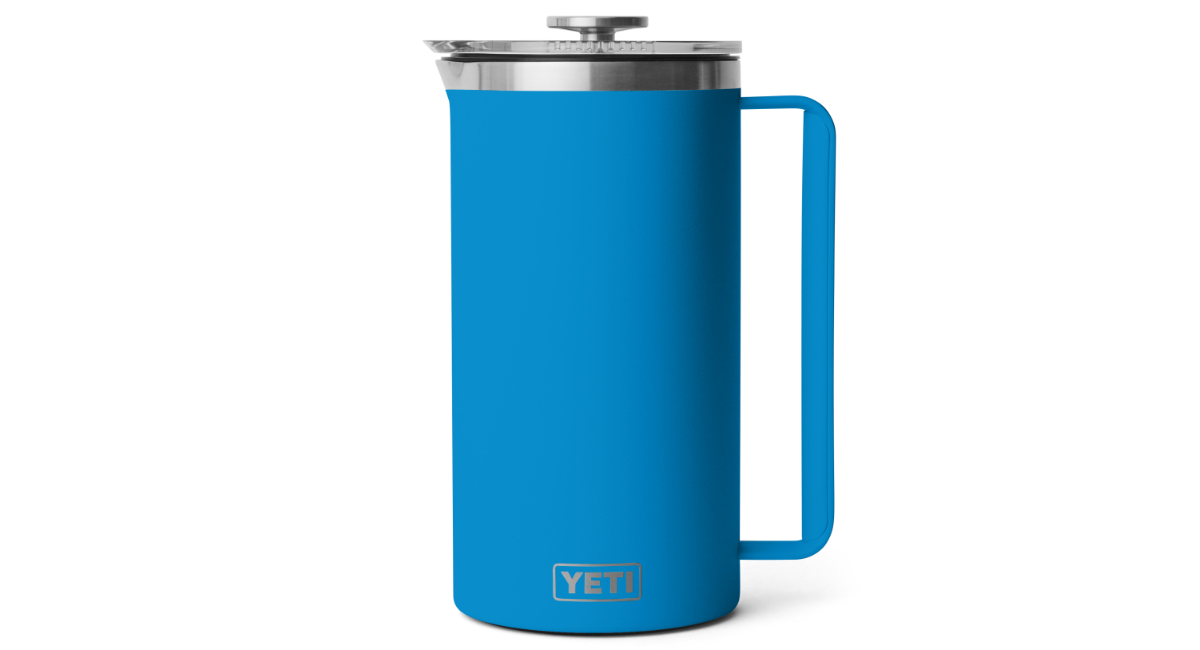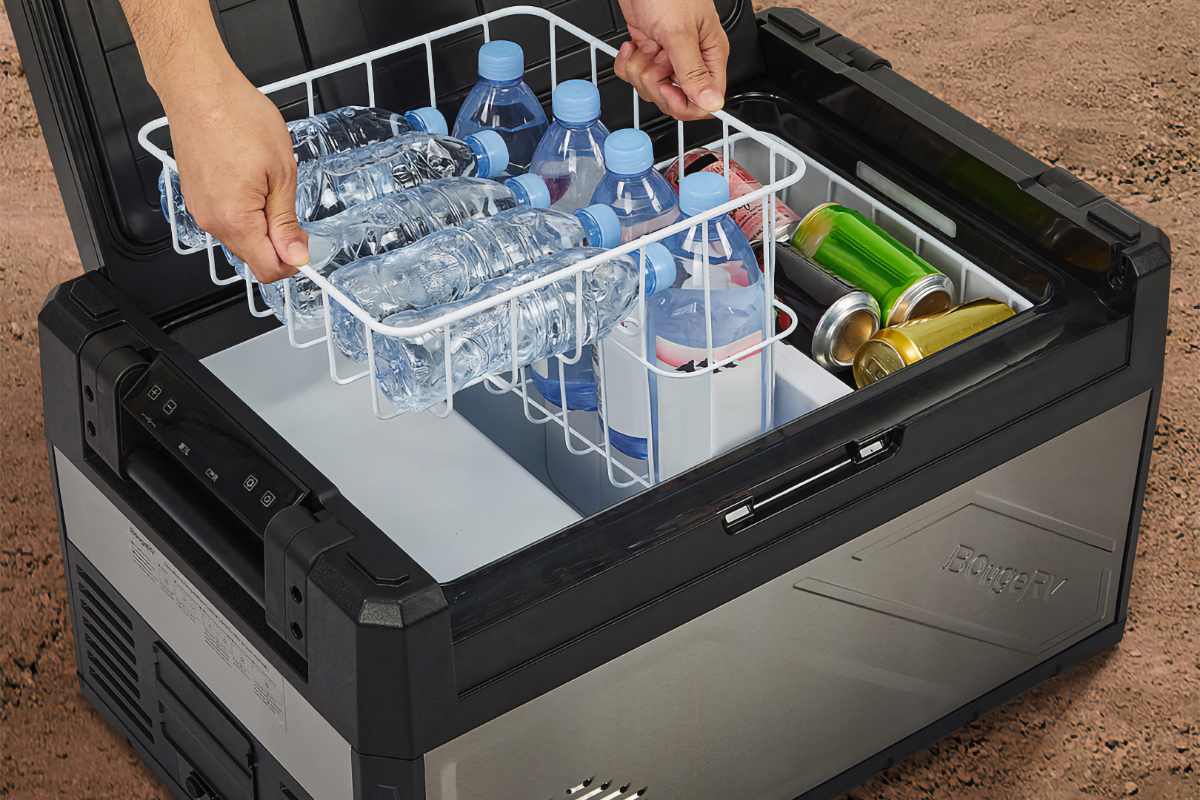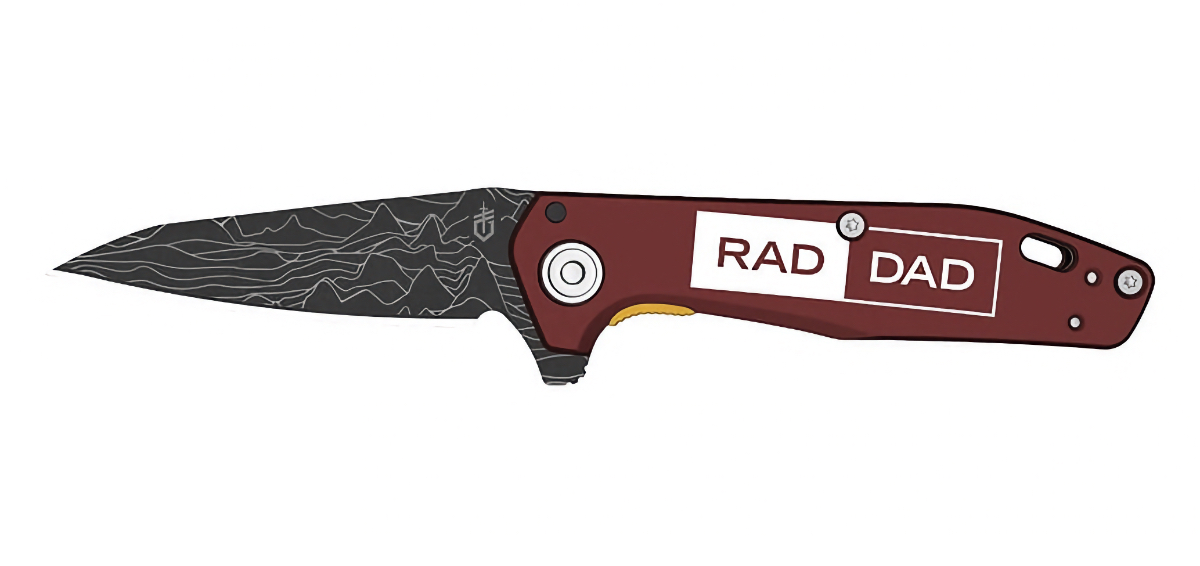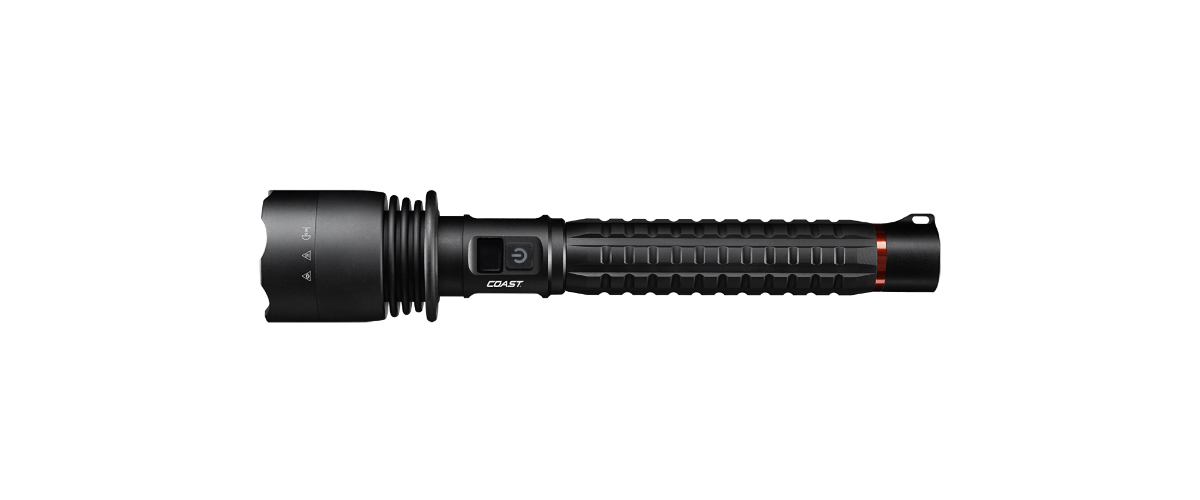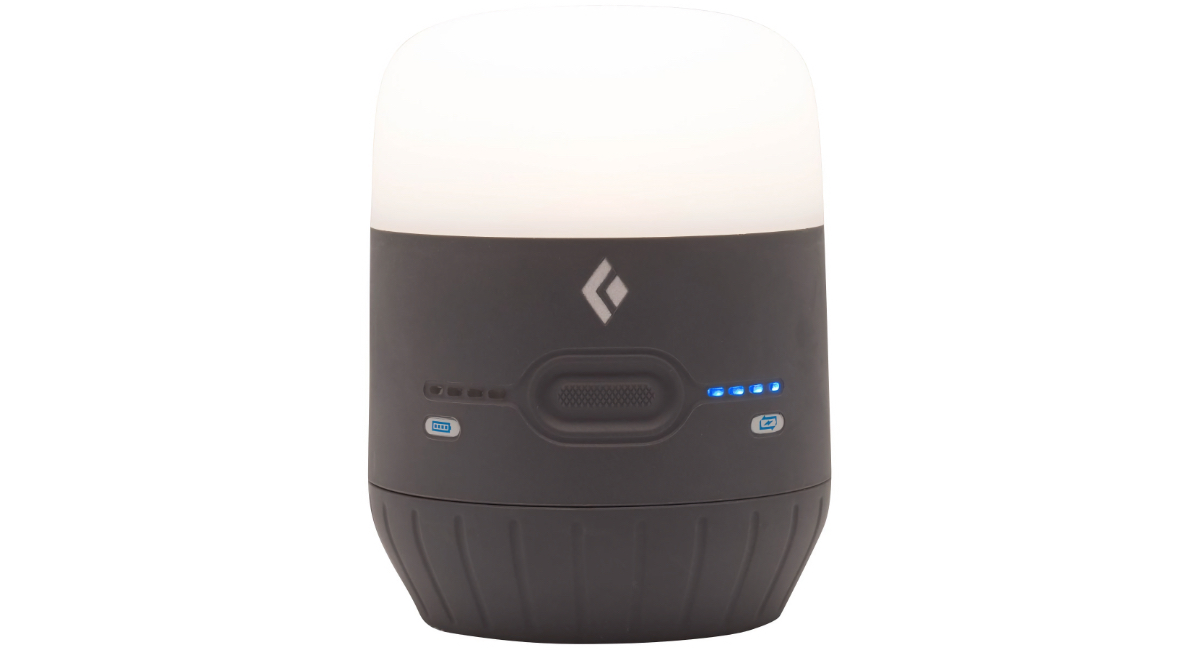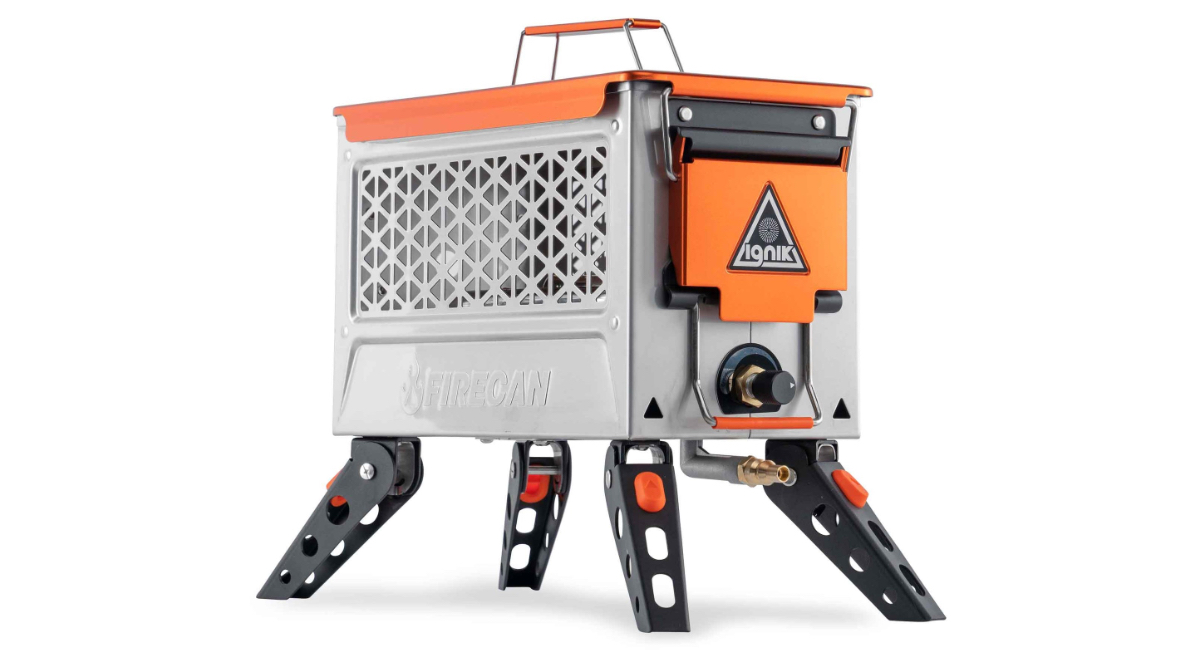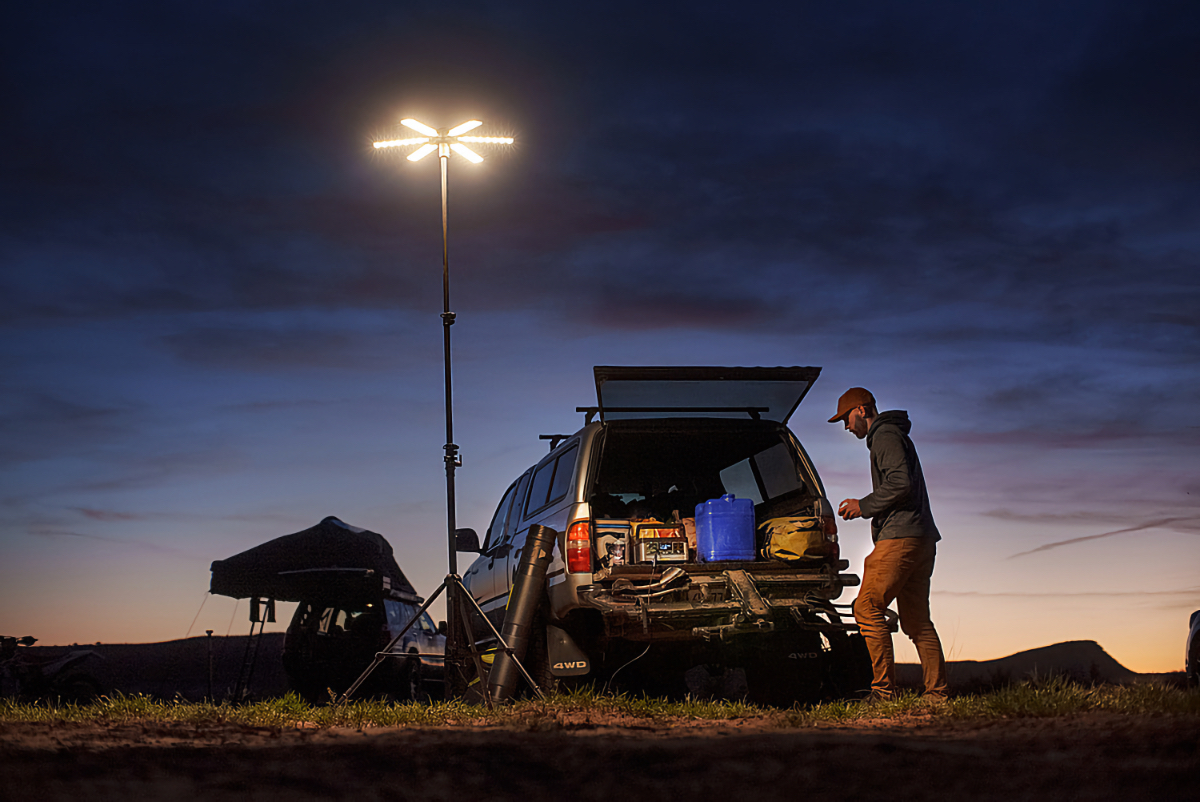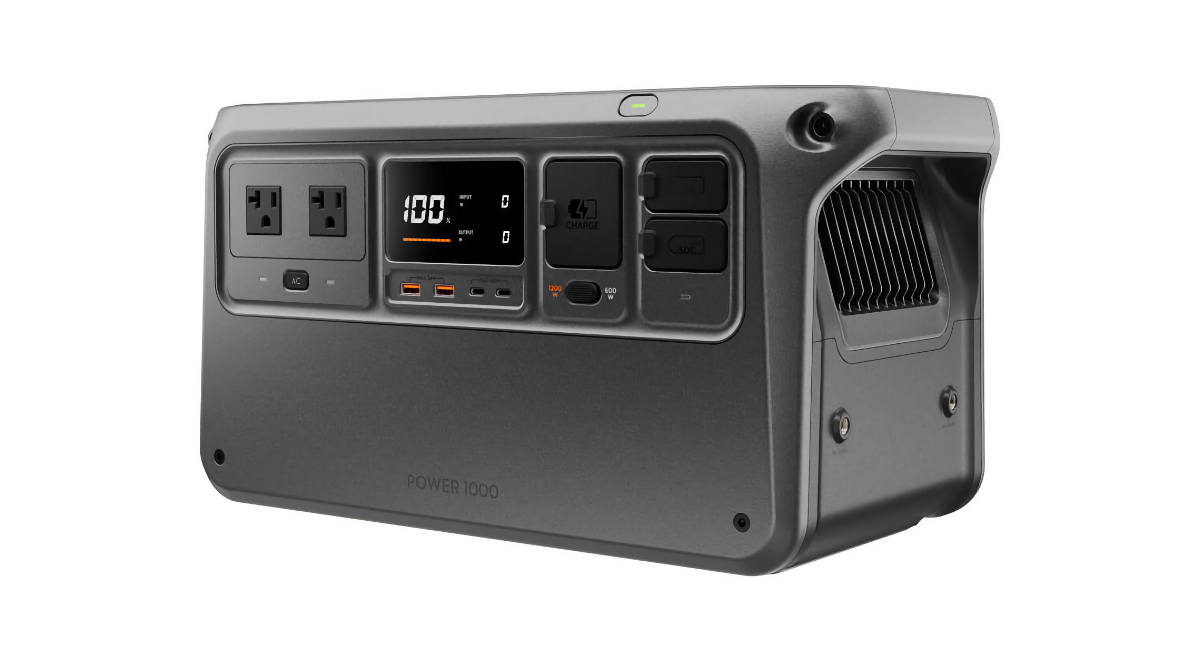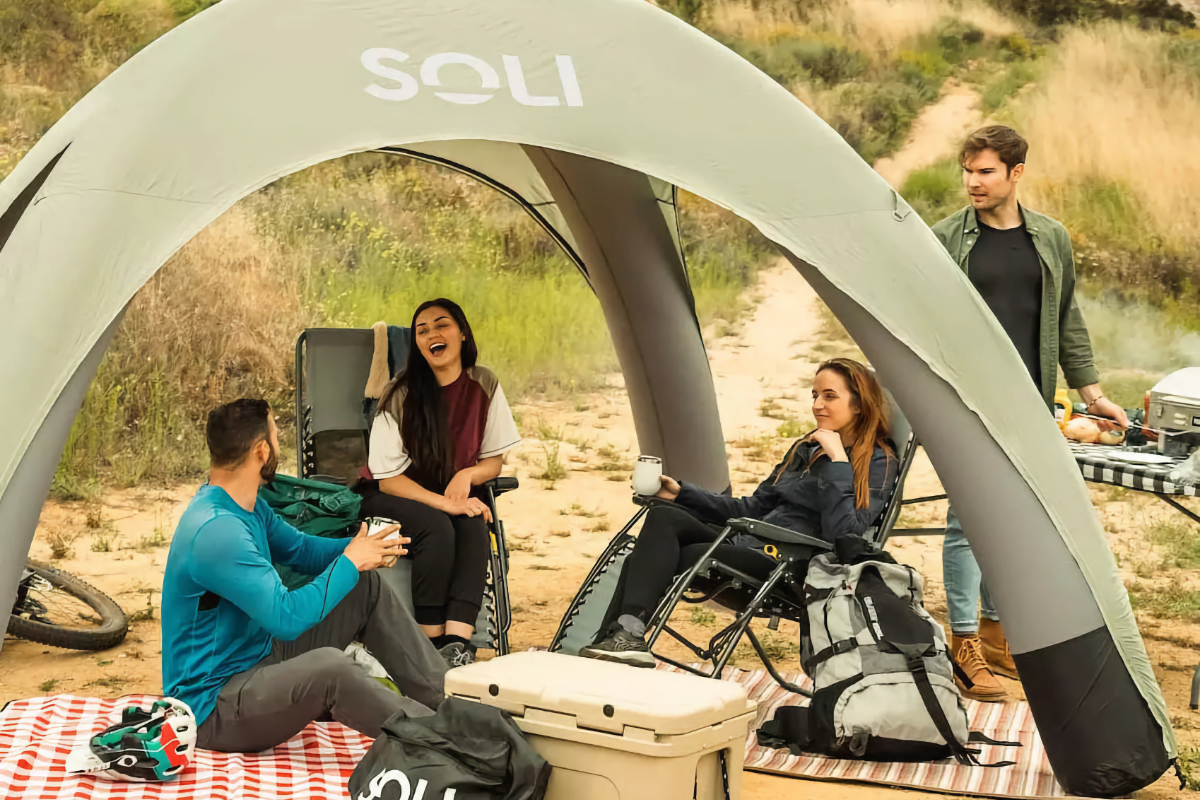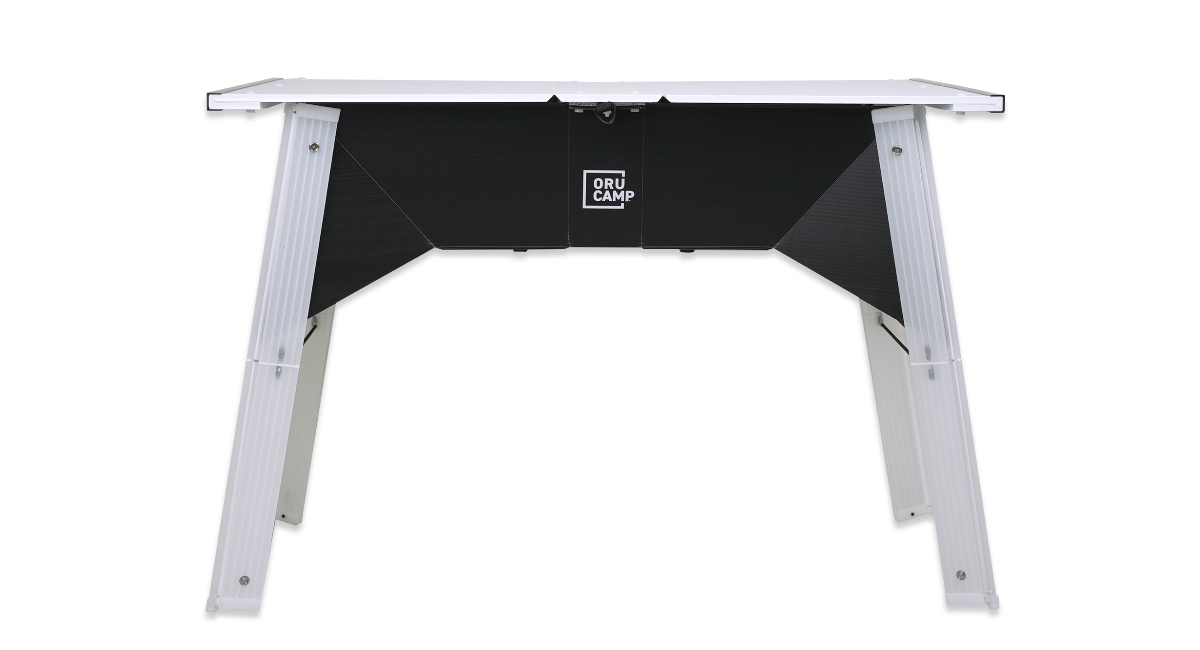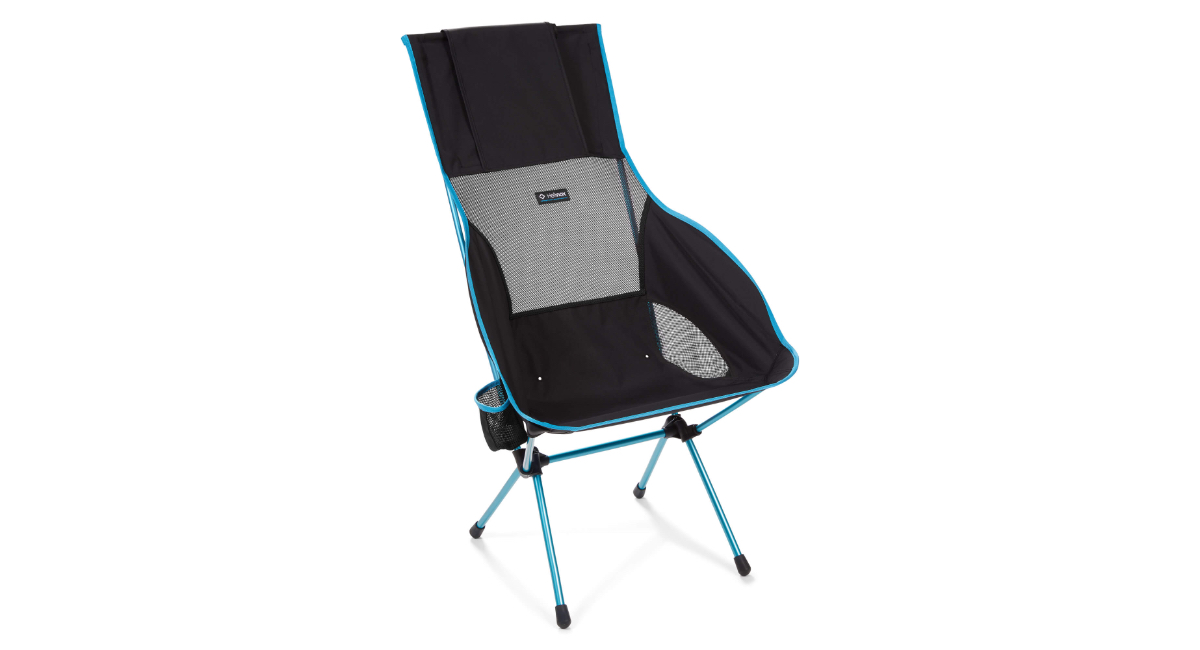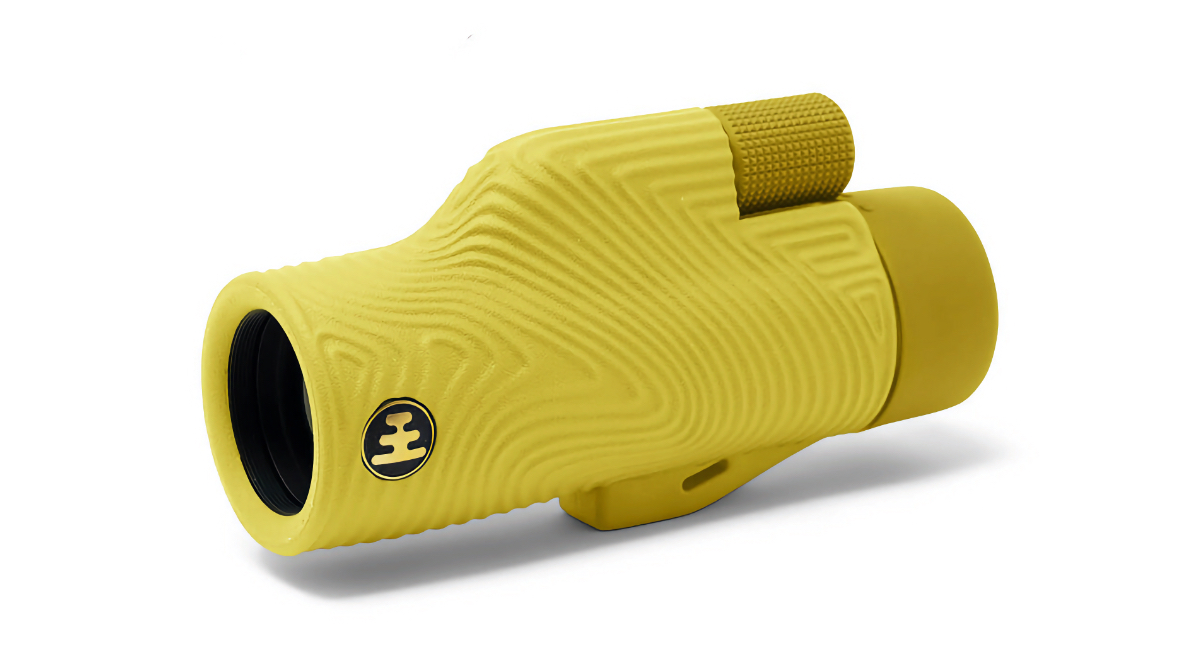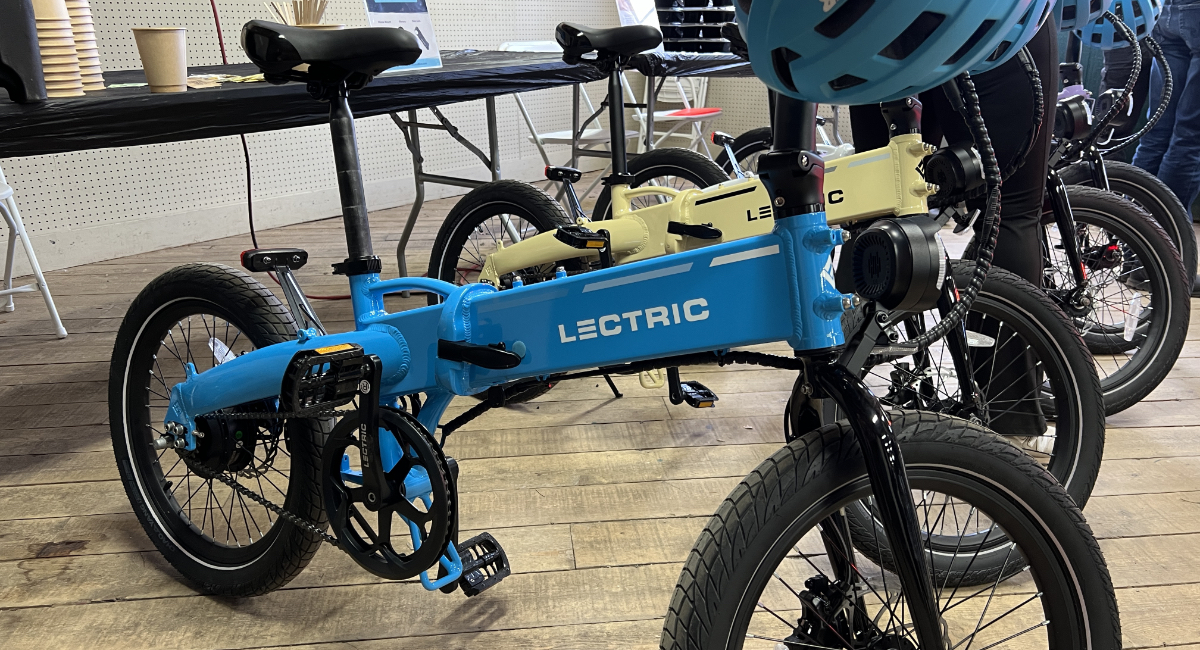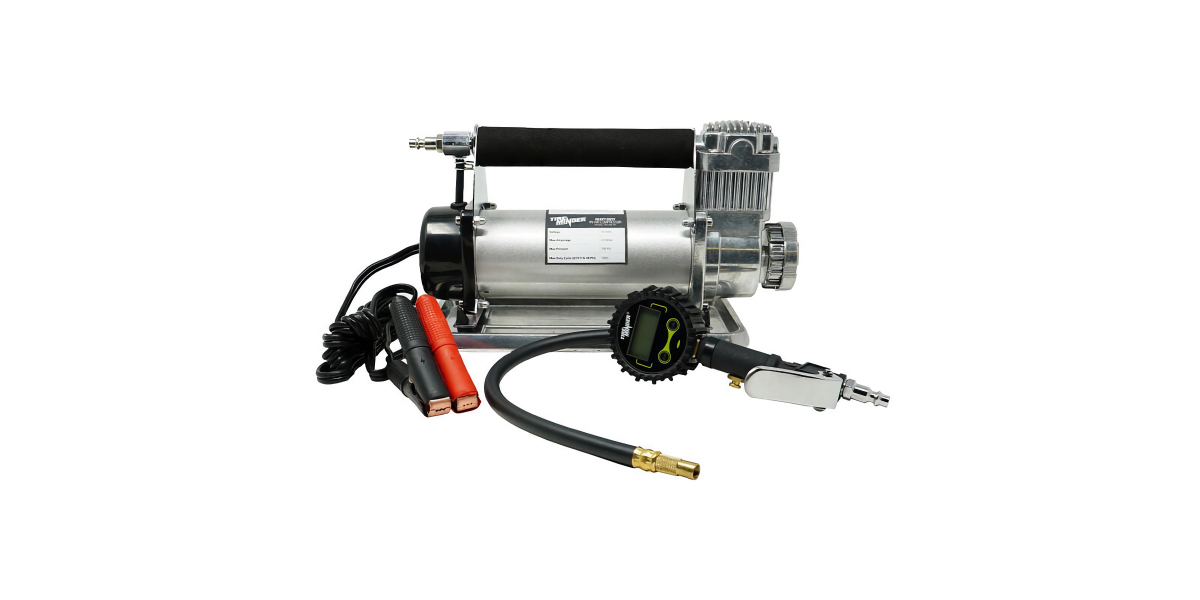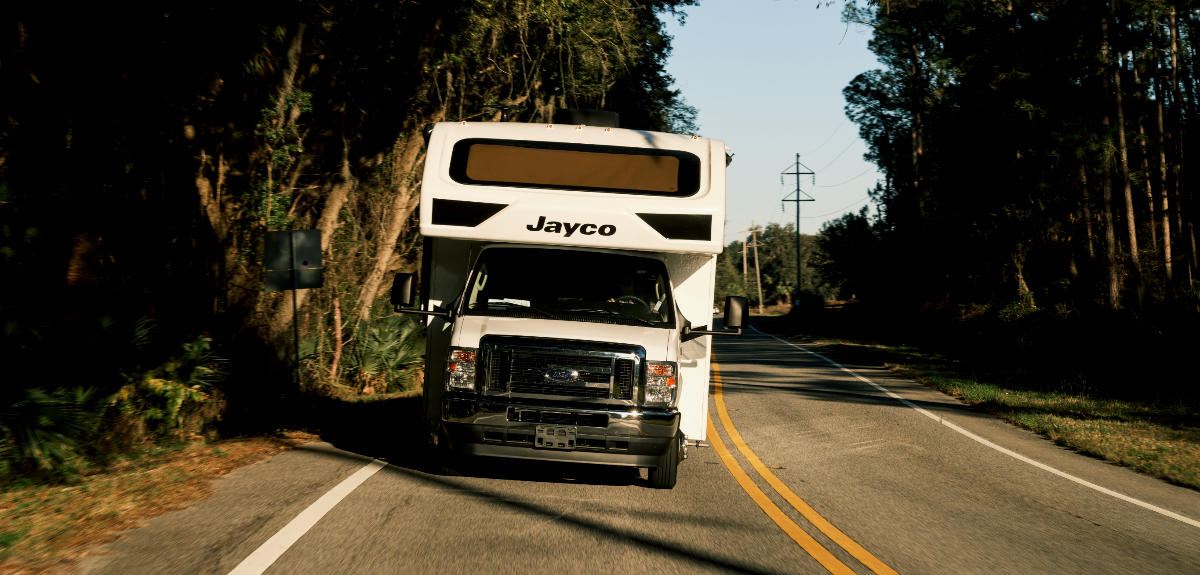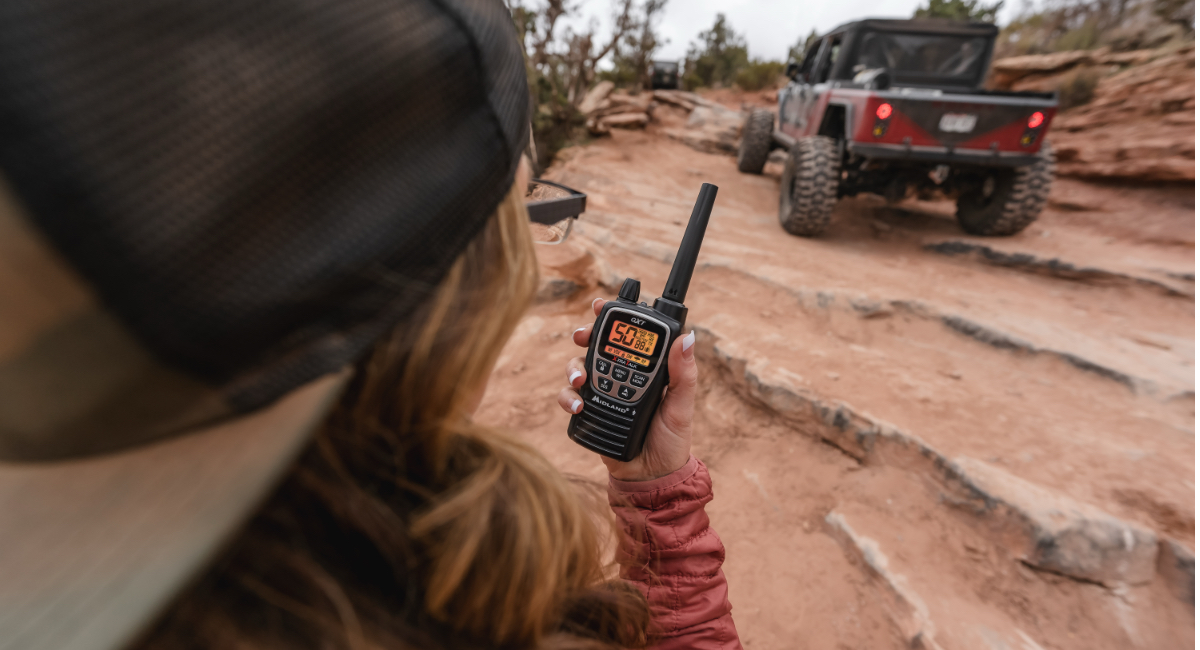Wondering what you should get your dad for Father’s Day this year? If he’s into RVs, camping, and the outdoors in general, we’re here to help. Here are a few suggestions for gifts that he not only wants and needs but might actually love, too.

Photo Credit: Mountain Khakis
Mountain Khakis Pants
Stylish, comfortable, and built for the outdoors, Mountain Khakis are a great gift for dad. These pants come in a variety of styles and colors and have great features like hidden pockets, breathable stretch fabrics, and high-quality zippers. They also happen to look great, too, easily transitioning from the trail to an upscale restaurant without missing a beat. Prices start at $60.

Photo Credit: Eddie Bauer
Eddie Bauer Solarfoil Pro Hoodie
Versatile, comfortable, and quick-drying, the Solarfoil Pro Hoodie from Eddie Bauer is a versatile pullover for warm weather use. The garment’s lightweight fabrics provide UPF 50+ protection from the sun while a relaxed fit and moisture-wicking properties ensure comfort on the trail, on the water, or just roaming around town. Available in four colors, the Pro Hoodie sells for $70.

Photo Credit: The North Face
The North Face ThermoBall Traction Mules
Every dad loves a comfy pair of slippers, but what sets the ThermoBall Traction Mules from The North Face apart is that they’re perfect for indoor and outdoor use. TNF combined a cozy insulated upper with a high-traction rubber outsole to create the perfect footwear for the campsite. Priced at $59 and available in multiple colors, these are the best kicks for just relaxing at home or in the RV.

Photo Credit: Yeti
Yeti Rambler French Press Coffee Maker
Is your dad the kind of guy who needs a fresh cup of coffee, even when camping at a remote location? The new Yeti Rambler French Press delivers an outstanding brew anytime and anywhere. Made with the brand’s legendary build quality, the carafe features a twist-to-lock lid and double-wall vacuum insulation to keep its contents piping hot, even in cool outdoor conditions. Available in a variety of colors and in 34 oz. and 64 oz. sizes, the Rambler French Press is a revelation for coffee lovers. MSRP: $110 (34 oz.)/$130 (64 oz.)

Photo Credit: High Camp Flasks
High Camp Flasks
For drinks of a decidedly different sort, check out what High Camp Flasks has to offer. The company makes high-quality stainless steel tumblers for carrying dad’s other favorite beverage wherever he chooses to wander. The Firelight Flask 750 has a 750 ml carrying capacity, two built-in cups, and is capable of keeping a drink hot or cold for up to 24 hours. Alternatively, the compact Torch Flask features a similar design but in a smaller, more compact 6 oz. model. The two containers are priced at $129 and $99, respectively.

Photo Credit: BougeRV
BougeRV Rocky Portable Refrigerator
Keeping your favorite beverages and food cold while camping, tailgating, or traveling just got a lot easier, thanks to BougeRV’s new line of Rocky portable refrigerators. These units come in 41-, 55-, 69-, and 81-quart sizes and feature dual temperature zones that can range from -4ºF to 68ºF. An optional battery pack provides up to four hours of runtime without an external power source, while a rugged stainless steel exterior resists corrosion and the weather. Other nice features include a built-in bottle opener, an LED display, and remote control via a smartphone app. Prices start at $417.

Photo Credit: Gerber
A Custom Pocket Knife From Gerber
Gerber makes some of the best everyday-carry pocket knives on the market, but did you know you can also get one custom-made for your dad? The company offers several of its knives and multitools—including the Assert, Fastball, and Center-Drive—in customizable formats, allowing you to create the ultimate personalized gift. Select from a variety of blades and handles, and even choose a pattern or image to engrave on the grip. Pricing starts at $200.

Photo Credit: Coast
Coast XP40R Rechargeable Flashlight
Every dad needs a rugged and reliable flashlight, and they don’t come much more rugged and reliable than the Coast XP40R. This essential piece of gear includes a built-in rechargeable battery that offers up to 36 hours of use on a single charge. Its bright LED bulb can produce an astounding 8000 lumens on its brightest setting and easily switches between a narrow spot or wider flood beam as needed. The XP40R is IP54 dust and water-resistant, has five modes of operation, and includes a real-time display of its current battery level. Its integrated USB-C port can even be used to recharge other small devices, making this a very handy flashlight indeed. MSRP is $89.99.

Photo Credit: Black Diamond
Black Diamond Moji Charging Station
This handy little camp lantern produces 250 lumens of light and has a burn time of up to 50 hours. Better still, it can be used to recharge small devices like a smartphone or headphones. Compact and lightweight, the Moji Charging Station slips nicely into a backpack but also comes in handy in and out of the RV. MSRP is $79.95.

Photo Credit: Rocky Talkies
Rocky Talkie Mountain Radios
Let’s face it: cell service isn’t always great when you’re camping off-grid, and two-way radios remain a reliable way to communicate. The Mountain Radio from Rocky Talkie is an excellent option for communicating between vehicles or staying in touch in the backcountry. Rugged, powerful, and remarkably lightweight, these devices provide a four-day battery life and a line-of-sight range of up to 35 miles. They also come with a handy carabiner to hang them from a backpack and a headset connector for hands-free use on the trail. MSRP is $110 each.

Photo Credit: Ignik
Ignik FireCan Portable Fire Pit
Whether you’re at home in the backyard or at a remote campsite, there is nothing better than gathering around the fire. Lightweight, compact, and versatile, the Ignik FireCan is a safe and easy way to enjoy a campfire. This portable fire pit connects to a propane canister to get a warm blaze going in seconds, while its foldable legs and removable lid add convenience and style. At $179.95, the standard FireCan makes an excellent gift, while the FireCan Elite ($249.95) is lighter, more powerful, and offers more control. Or, just go all-in with the FireCan Deluxe, which comes with a grill insert for making delicious meals anywhere you go.

Photo Credit: GoalZero
GoalZero Skylight
If additional light is needed at the campsite, the GoalZero Skylight just might do the trick. Designed to illuminate a large area, this device offers 6000 lumens of brightness and covers up to 300 feet. When not in use, it collapses to a surprisingly small size, making it easy to carry and store. A built-in internal battery allows it to run independently of an outside power source for up to eight hours, making it a great option for backyard BBQs, after-dark tailgating, and boondocking at remote locations. The Skylight sells for $399.95.

Photo Credit: DJI
DJI Power 1000 Portable Power Station
DJI is best known for making excellent drones, action cameras, and other products aimed at professional and amateur videographers and photographers. Recently, the company released a line of portable power stations to help keep their gadgets working in the field, but they work equally well at running small appliances, laptops, and mobile devices at the campsite. The Power 1000 model offers a max output of up to 2200W and includes an array of 120V AC outlets and USB ports. Best of all, the power station recharges extremely quickly, and at just 23dB, it is much quieter than a gas-powered generator. MSRP is $999, but it is currently on sale for $699.

Photo Credit: Lego
Lego Land Rover Defender
You may not be able to afford to give dad a full-size version of the iconic Land Rover Defender, but one made from Legos will still make his day. The toy company offers kits that include the classic Defender and its newly revised modern edition, each rendered in stunning detail. Both are sophisticated and fun, requiring several hours to assemble. He’ll want to display it proudly on a bookshelf or mantle. The modern version costs $320, while the old-school model will set you back $239.99.

Photo Credit: Apple
Apple AirTags
Apple AirTags are tiny GPS tracking devices with a wide variety of uses. Stick one in a vehicle to track its location, or add one to your luggage to make sure it never gets lost. They can even be attached to a keychain or a dog collar to track your pet’s movements, with alerts sent to an iPhone should they wander outside a geofenced zone. AirTags not only protect valuables but also provide good peace of mind, which is something any dad can appreciate. Pricing starts at $29 for one AirTag or $99 for a pack of four.

Photo Credit: Soli
Soli Air Canopy
If your dad enjoys spending time outdoors in the summer but isn’t a big fan of the hot sun, the Soli Air Canopy just might be the best gift you can get him. This ingenious product comes with a mini air compressor capable of inflating the structure in under two minutes, creating a personal shelter from the sun, wind, and rain. Tipping the scales at just 17 lbs., the canopy is extremely portable and comes with a backpack that makes carrying to the beach, campsite, or other location extremely easy. MSRP is $349.

Photo Credit: Oru
Oru Camp PopLounge Chair and SwitchTable
Oru is best known for its origami-inspired folding kayaks, which are lightweight, fun to paddle, and easy to store. Now, it has taken that same design aesthetic and applied it to camp furniture, creating a line of products that are highly functional, but don’t take up much room in a closet, car, or RV storage compartment. One of our favorites is the PopLounge chair ($87), which is surprisingly stable and comfortable, and even features a hidden storage area under the seat. Pair it with the SwitchTable ($119) for a convenient, go-anywhere option for enjoying meals at the beach, campground, park, or while tailgating. The possibilities are nearly endless.

Photo Credit: Helinox
Helinox Savanna Chair
For a more traditional take on the camp chair, consider the Helinox Savanna Chair. With its wide seat and tall back, this model offers exceptional support and comfort. Mesh cup holders on both sides provide a place to hold beverages and snacks, while a padded headrest further enhances relaxation. And at the end of the day, the entire chair breaks down to a surprisingly small size that makes storing it an an RV, car, or closet a breeze. MSRP is $219.95.

Photo Credit: Nocs Provisions
Nocs Provisions Field Tube
Binoculars are great for birdwatching and spotting wildlife, but they can also be somewhat bulky and heavy to carry in a daypack. Nocs Provisions solves those problems with its lightweight and compact Field Tube, a monocular that offers best-in-class optics, an easy-to-use focus wheel, and a 32mm lens coupled with a 10x zoom. Despite being rugged and water/fog proof, the Field Tube weighs a mere 8 oz., making it easy to carry on any outdoor adventure. It is nicely priced at $125.

Photo Credit: Kraig Becker
Lectric XP Lite 2.0 E-Bike
E-bikes are all the rage these days, as they have become more affordable and approachable for a wider audience. The latest model from Lectric is the XP Lite 2.0, which brings some compelling features that will definitely appeal to RVers. Most notably, this bike only weighs 49 pounds and has a folding frame, making it easy to store and transport. The standard version costs $799 and has a range of up to 45 miles, while the long-range model doubles that output for just $200 more. Other new features include hydraulic disc brakes a backlit color LCD display, and a quieter motor.

Photo Credit: TireMinder
TireMinder Portable RV Air Compressor
If your dad is into RVing, ATVing, off-roading, overlanding, or some combination of all of those activities, he’ll appreciate getting a high-quality portable air compressor. The TireMinder RV Air Compressor weighs just 14 pounds, runs off 12V power, and is capable of taking a Class A motorhome tire from completely flat to 100 PSI in less than 12 minutes. The unit features built-in overheating protection and can operate continuously for up to an hour at a time. And at 60 decibels, it isn’t overly loud either. MSRP is $369.

Photo Credit: Zack Wittman
Adventure Genie Pro Plan Subscription
Tech-loving dads will get a kick out of AdventureGenie, a subscription service that uses AI to help plan RV trips. The system’s database has access to more than 25,000 campgrounds and 500,000 points of interest across North America, using that information to craft custom itineraries tailored to the individual user’s needs and interests. A basic AdventureGenie plan is free, but the Pro Plan costs $40/year and adds a suite of essential features like saving trips, selecting specific dates for the journey, and printing out a full itinerary.

Photo Credit: Good Sam
2025 Good Sam North American Campground Guide
With over 12,000 RV campground listings, the Good Sam North American Campground Guide helps dad discover new places to explore and park his rig. This definitive collection of the best places for RV camping across North America now comes with unique insights from travel writers at Wildsam, offering suggestions on where to go and what to see. The guide also includes coupons with more than $1,500 in savings for use at Camping World, RVs.com, and other outlets. All of that for the bargain price of just $13.95.
A Good Sam Membership
Speaking of Good Sam, a membership to that organization is a gift that keeps on giving all year long. Benefits include discounts on over 2,000 campgrounds and RV parks across the country, as well as savings and free shipping on purchases at Camping World. Dad will also save money at the pump when filling up at Pilot Flying J travel centers and will receive special rates and savings from other outlets that are only available to Good Sam members. Prices start at just $29/year.

Photo Credit: Wildsam
A Subscription to Wildsam
Magazine
Wildsam is our love letter to road trips, RV travel, camping, and the open road. The magazine is published eight times a year and features high-quality photos and writing, gear recommendations, RV accessories, destination guides, and so much more. Printed on high-quality paper, the publication feels like a throwback to a bygone era when dreamy imagery and top-notch prose inspired the adventurer in all of us. A one-year subscription costs just $19.97, but your dad will think you paid a lot more.
Happy Father’s Day to all the dads out there!
The post Father’s Day 2025: 25 Gifts for RVing and Outdoorsy Dads appeared first on RV.com.
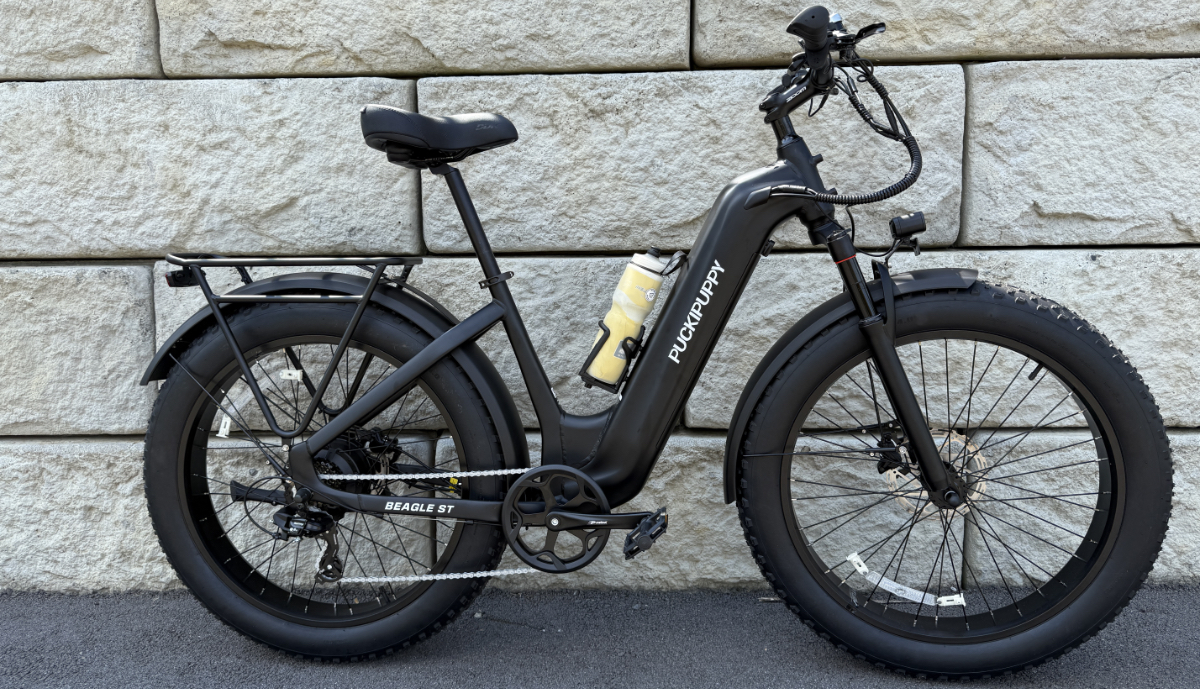
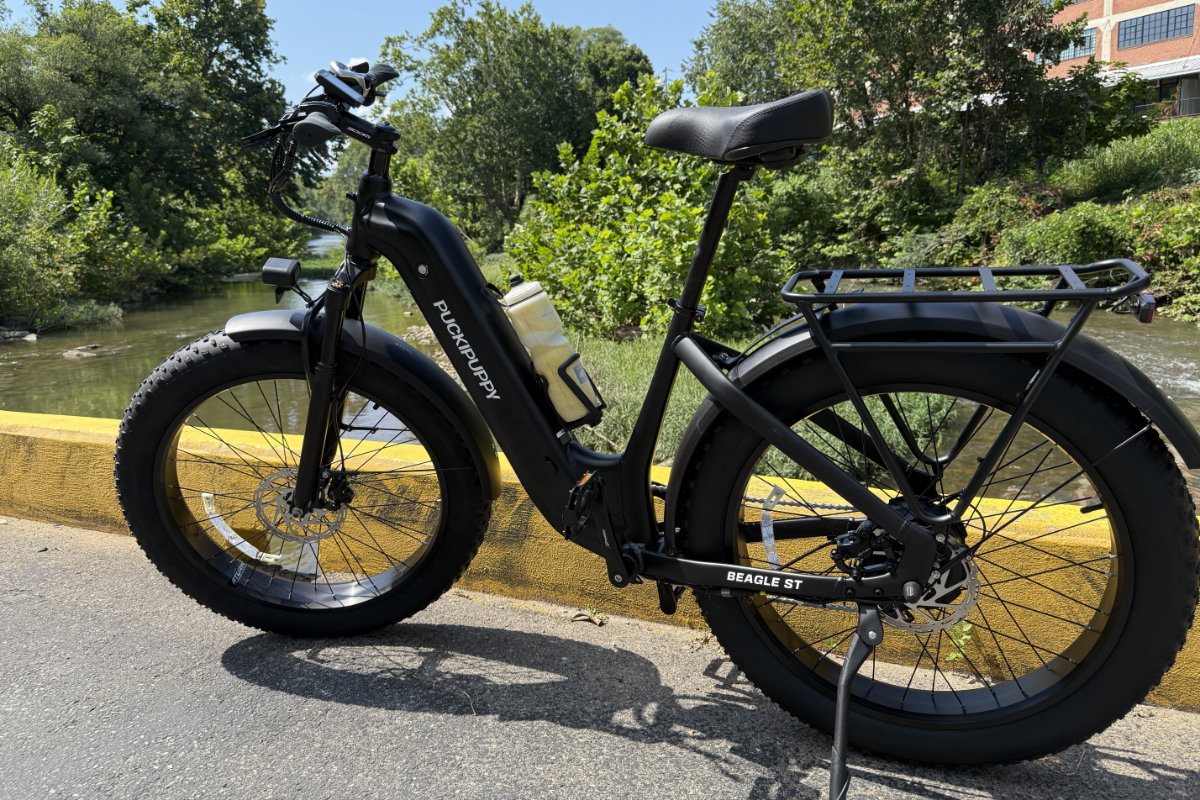
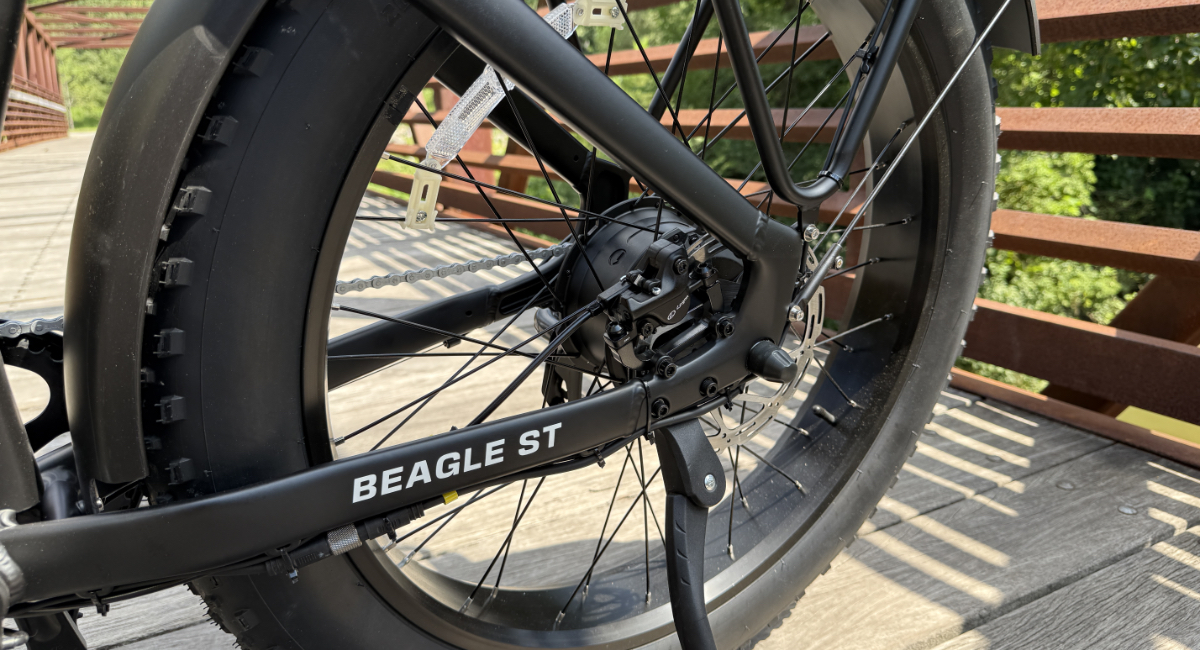
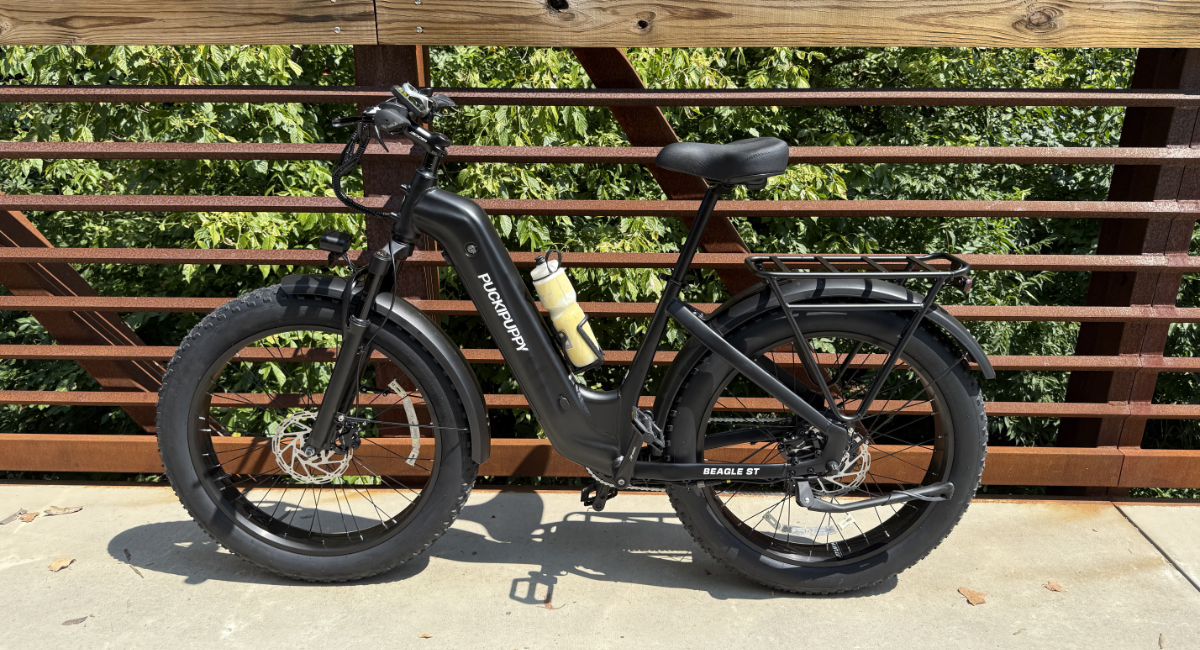
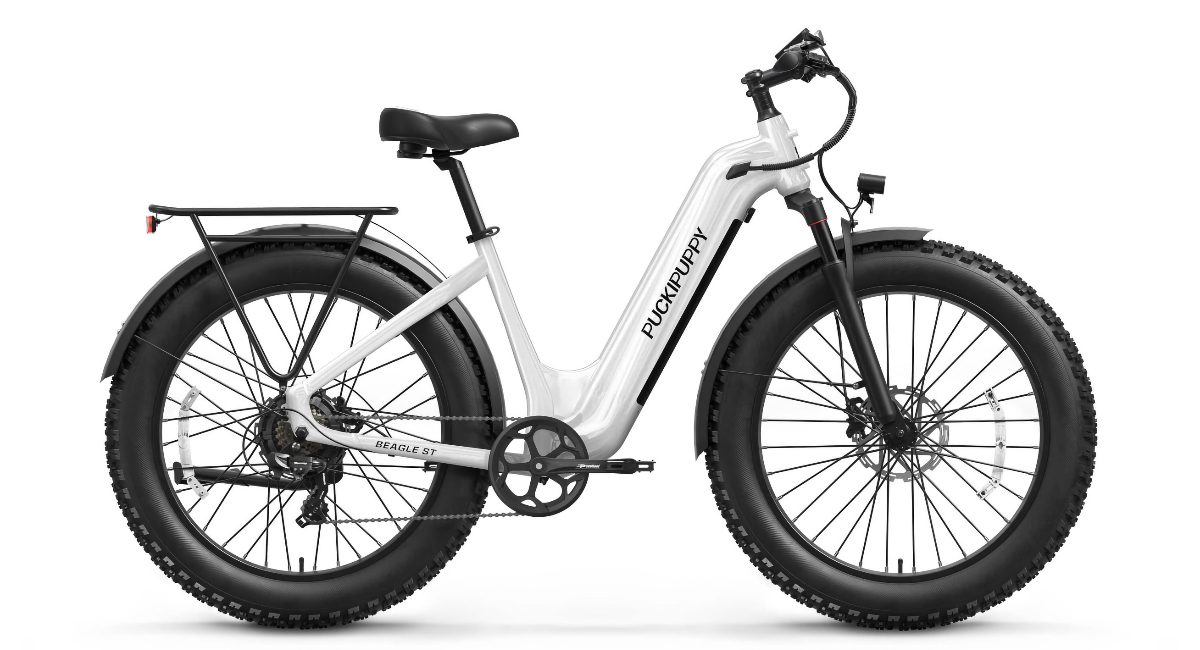
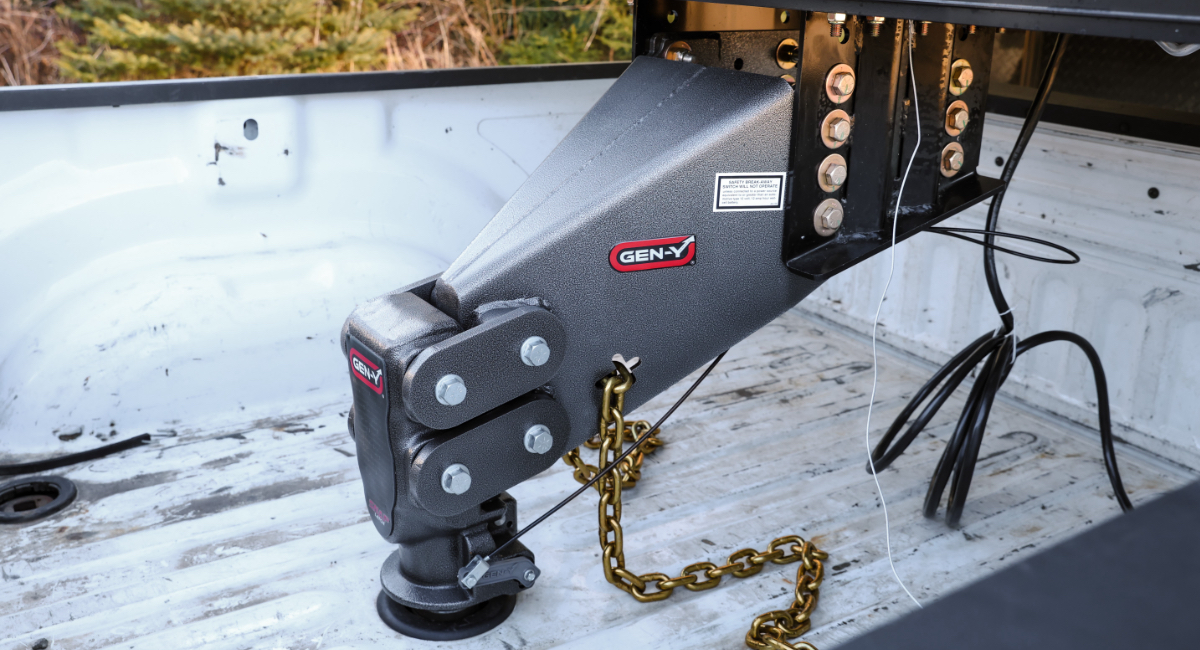
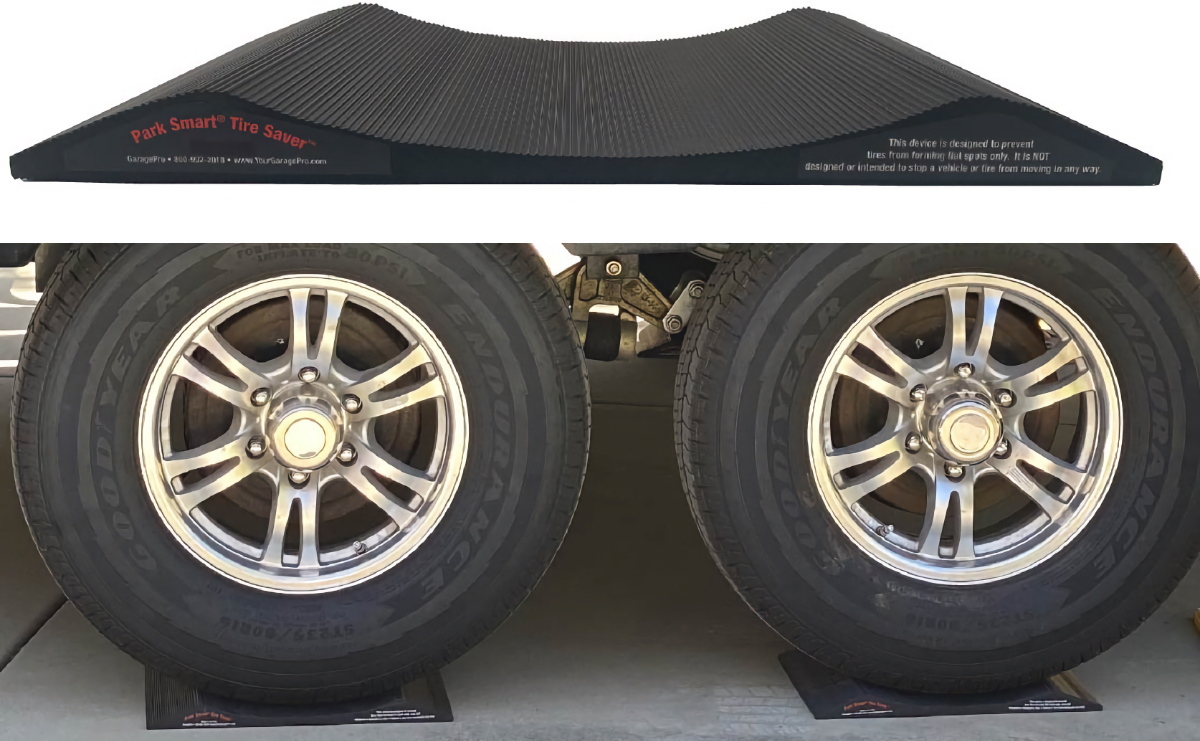
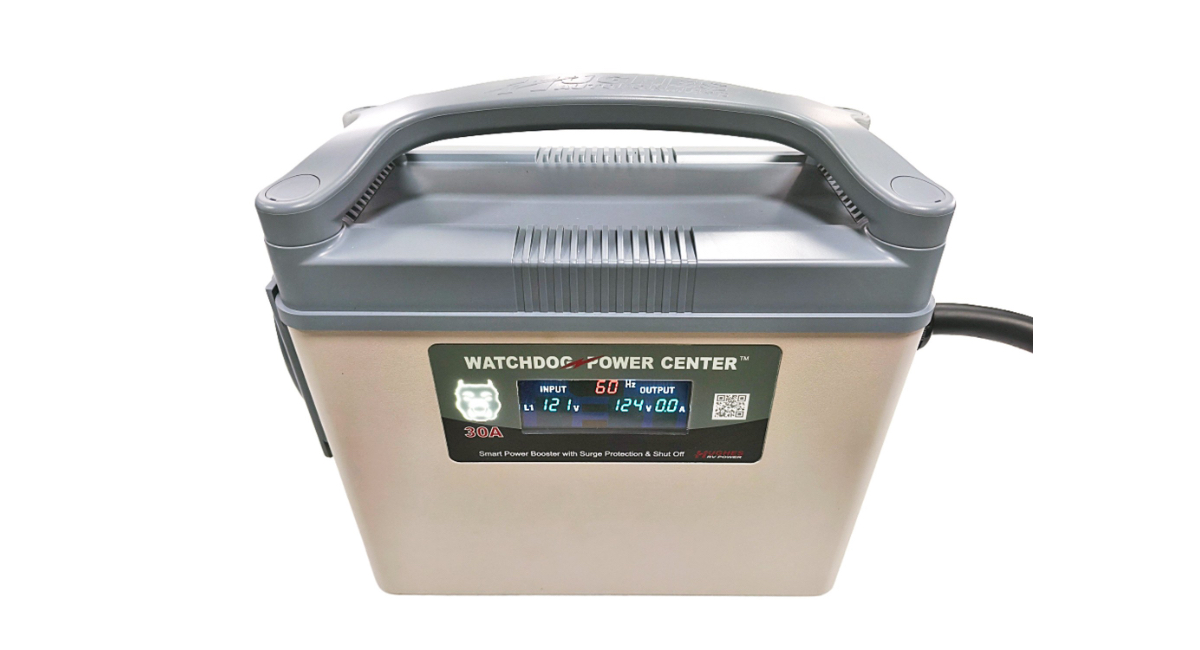
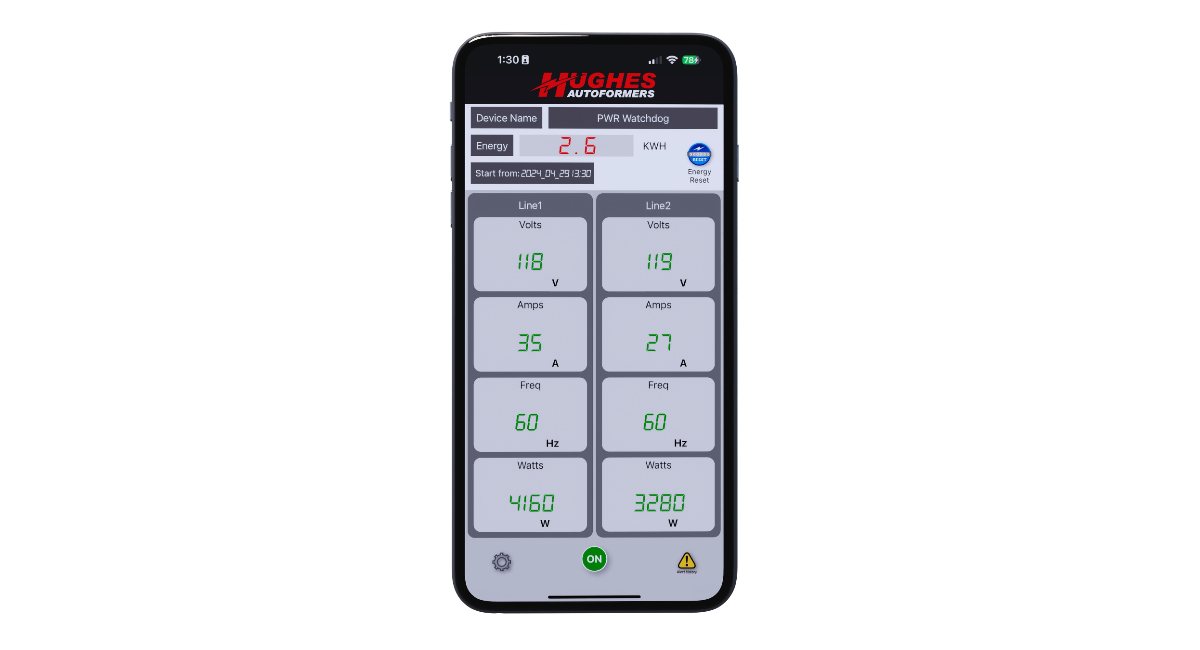



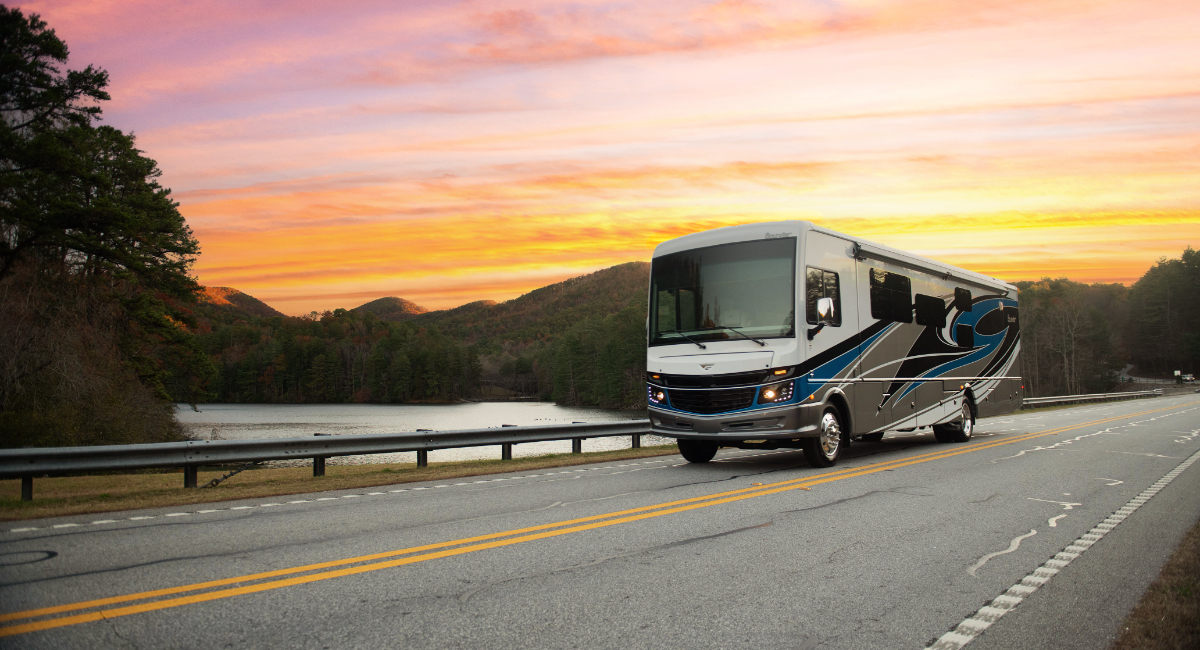
 system delivers unmatched stability and control, eliminating the sway, bounce, and fatigue of traditional suspensions.
system delivers unmatched stability and control, eliminating the sway, bounce, and fatigue of traditional suspensions.